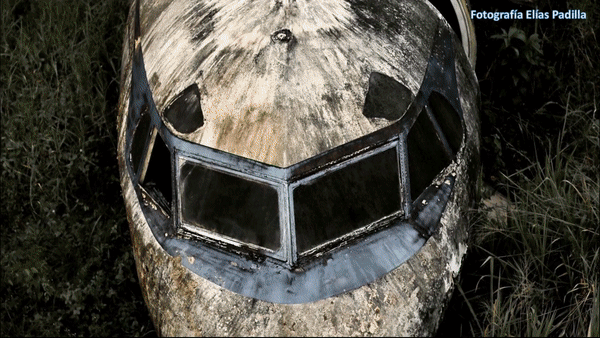The Ecuadorian city of Coca, also known as Puerto Francisco de Orellana, is located 605 kilometers east of Guayaquil —by land. It is the cantonal head and capital of Orellana Province, in the northern part of Ecuador's Amazon region. The city is surrounded by the Napo, Coca, and Payamino rivers. The area sits at an altitude of 255 meters and has a very humid climate. Oil activity brought a period of relative prosperity. Thus, although air transport had always played a significant role, the rise of "black gold" further boosted connections.
On 07Apr2005, the Fokker F-28 HC-CDA -msn. 11230-, operated by the airline Ícaro was flying flight 504 from Quito to Coca. During landing, the aircraft touched down a few meters short of the beginning of runway 15, striking the edge of the pavement. It veered to the left off the runway and eventually came to a stop against a building wall. The damage sustained led to the aircraft being written off.
At some point, for recreational purposes, the battered fuselage was placed on a barge and turned into a dance venue called Rumba Náutica. Unfortunately, a sharp drop in oil prices caused the city and its surroundings to fall into crisis, prompting part of the population to leave. Various commercial activities declined, including the recreational venue. A photographic production reveals the abandoned state of the fuselage, which is no longer located on the riverbed, while vegetation gradually begins to cover its surface.
On 07Apr2005, the Fokker F-28 HC-CDA -msn. 11230-, operated by the airline Ícaro was flying flight 504 from Quito to Coca. During landing, the aircraft touched down a few meters short of the beginning of runway 15, striking the edge of the pavement. It veered to the left off the runway and eventually came to a stop against a building wall. The damage sustained led to the aircraft being written off.
At some point, for recreational purposes, the battered fuselage was placed on a barge and turned into a dance venue called Rumba Náutica. Unfortunately, a sharp drop in oil prices caused the city and its surroundings to fall into crisis, prompting part of the population to leave. Various commercial activities declined, including the recreational venue. A photographic production reveals the abandoned state of the fuselage, which is no longer located on the riverbed, while vegetation gradually begins to cover its surface.
Acknowledgments: Oswaldo Galán & Elías Padilla




